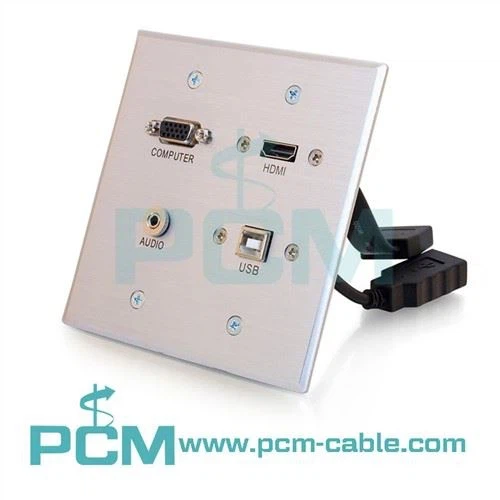With the continuous development of technology, video transmission has become more and more important in various fields. Whether it is a home entertainment system, a surveillance system, or a professional film and television production, choosing the right type of video cable is crucial for transmission quality and stability. However, there are various quality and performance video cables on the market, which can be broken down into the following types from worst to best:
RF cable:
RF (Radio Frequency) cables are often used to transmit analog signals, such as early television signals. This type of cable is the worst, as it is prone to interference during transmission, has poorer signal quality, and has limited resolution. Although RF cables have gradually been replaced by digital signals, they are still present in some older equipment.
Composite video cable:
Composite video cables typically include three different connectors for video, audio, and some control signals. Although it is an improvement over RF cable, the picture and sound quality may not be as good as other more advanced options due to mixed transmission of signals.
S-video cable:
S-Video cables provide better picture quality than composite video by separating the luminance (Y) and chrominance (C) signals. Although improved in quality, it's still an analog signal, subject to interference and distortion.
Component Video Cable:
Component video cables divide the video signal into three separate segments: red (R), green (G), and blue (B). This separation makes for a sharper picture, but still an analog signal. Component video cables were common in the early days of high-definition television (HDTV).
HDMI cable:
High-Definition Multimedia Interface (HDMI) cables are a major breakthrough in digital signal transmission. It can transmit high-quality high-definition video and audio signals, and supports additional data and control signals. The advent of HDMI cables has revolutionized the standard for video transmission, delivering outstanding performance for home entertainment, gaming, and professional production.
DisplayPort cable:
DisplayPort cable is also a digital video transmission standard with similar functions to HDMI. It excels at high-resolution and high-refresh-rate displays for a variety of devices, from TVs to computer monitors.
Optical HDMI/Optical DisplayPort:
Optical HDMI and Optical DisplayPort cables use optical fiber transmission technology, capable of transmitting high-quality high-definition video and audio signals, while reducing signal interference and loss. These cables are especially useful in long-distance transmission and professional applications.
Premium Flat Cable:
These cables are usually designed for high-end home theater systems or professional video production, and have high-quality conductors and shielding to ensure optimal signal transmission. They excel in image quality, stability, and durability.
To sum it up, the worst to best types of video cables cover a variety of transmission technologies, from analog to digital, and from general household to professional applications. When choosing a video cable that suits their needs, users should consider factors such as picture quality, transmission distance, device compatibility, and budget. With the continuous advancement of technology, the quality and performance of video cables will continue to improve, providing users with a better audio-visual experience.





